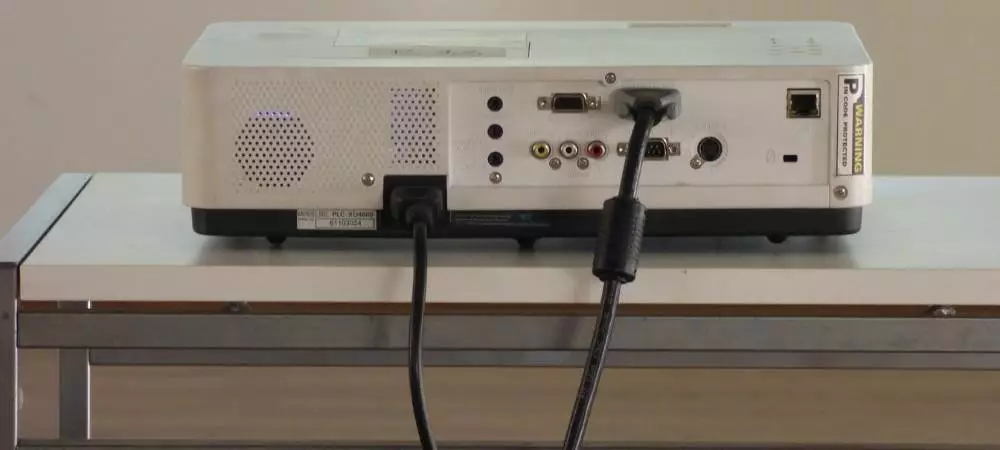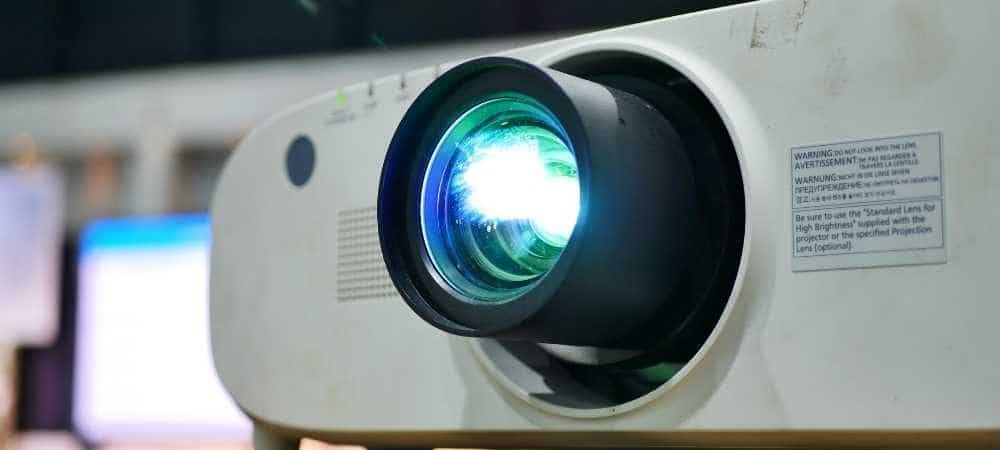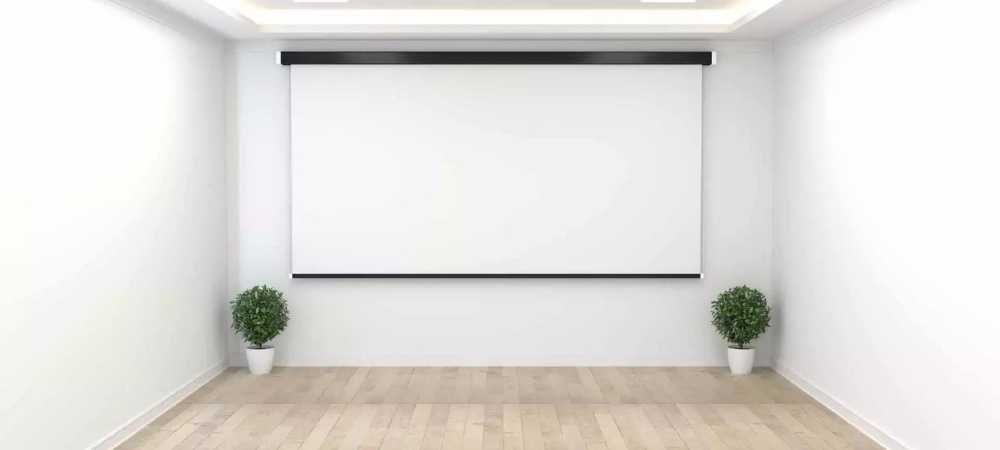The growing market size of the projector screen estimates to surpass US$ 308.6 Billion by 2026.
The growing popularity of projector screen has given its way to different types of projector screens innovation, each suiting specific needs. Buying a projector after diligent research will not yield the desired result unless accompanied by a quality screen. Many people commit the mistake of using a white or light-coloured wall for image projection. To attain detailed and crisp images in HD and UltraHD, it is a mandate to buy a screen with some special reflective coating to present a clearer and impressive projection.
Do you know there are 17 types of projector screens available in the market to suitably match your projector and enhance its image projection quality?
If not, this article will give you detailed information about the types of projector screens.
Table of Contents
What is a Projection screen?
It is a large reflective surface mount against the wall (in most of the scenarios) to watch movies, sports, hold conferences, training, etc. It is typically white in color.
17 Types of Projector Screens
Let’s dive into a detailed discussion of various projection screens one can make use of:
DIY screen
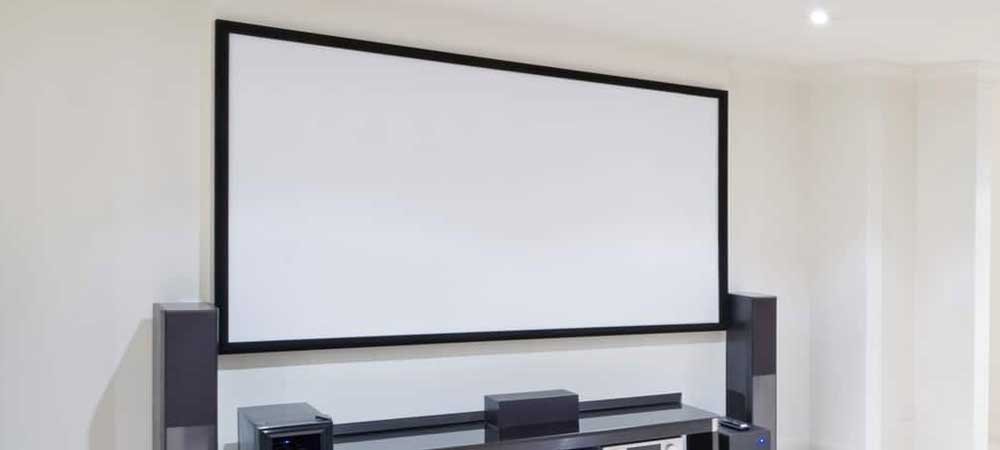
From painting your wall using reflective paint to using canvas material and a frame to DIY your projection screen, these are endless ways to showcase your creativity with some DIY hacks. All you need is good knowledge about rear projection diffusion technology, fabric Vs Plastic screen and blackout material to create a useful projection screen.
If DIY is not your cup of tea, here are some projection screens available in the market:
Portable screen
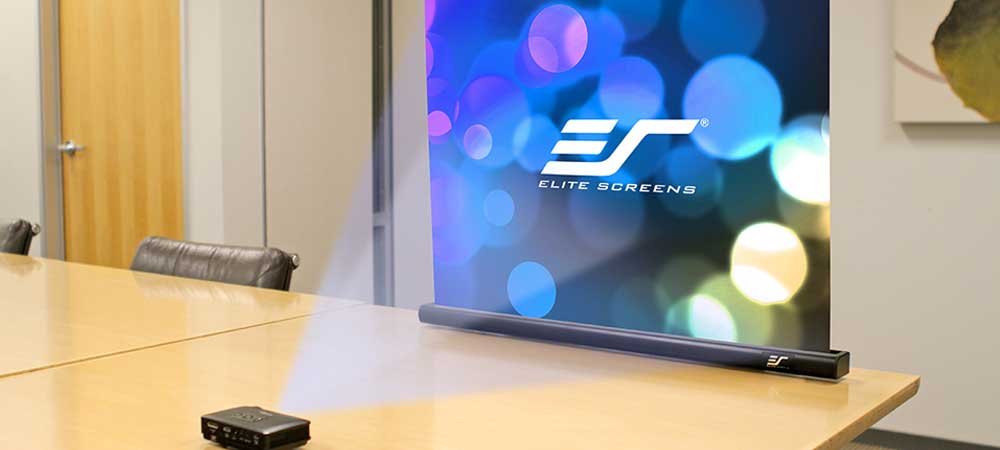
If you own a portable projector, it makes sense to invest in a portable screen. It comes with a mobile projection screen stand to uphold the screen wherever you want. These are generally lightweight, durable and easily collapsible to facilitate easy handling and transportation. If you have a 4K HD projector, these screens will justify the quality by offering a screen size of up to 40″. Check out 1440P Vs 4k to understand the difference.
It is essential to choose a portable screen that is suitable for a setup. Often the salesmen and promoters who do presentations at several places use them. It is generally rugged and sturdy to withstand multiple setups.
Manual Projector Screen
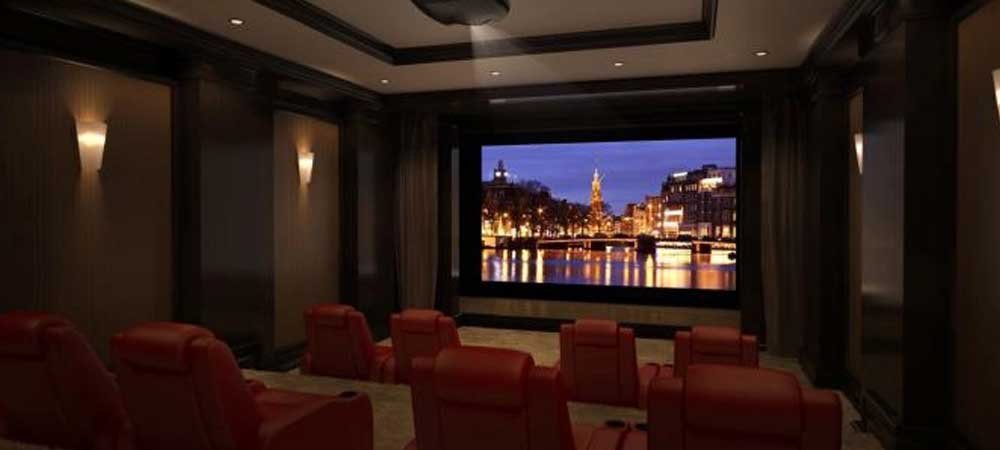
These screens are designed like window blinds. Using the pulley at the bottom, you can pull up or bring down the screen. These are the highly storable and hidden ware screens that are affordable compared to the electronically operated projection screens. A controlled return feature is available with the modern projector screen to enable going back slowly instead of rolling up.
As a quick-rolling mechanism often causes damage to the screen, these manual pulleys projection screens are durable. Also, these are light in weight due to the unavailability of the electronic component used to roll up or down automatically. Wall-mounted, ceiling recessed, and ceiling mounted are the options available to choose from.
Electric Projector Screen

Also known as motorized projector screens, these screen automatically hangs up at a press of a button or mechanically and comes down at your discretion. This screen is sleek, elegant and does not restrain much space in your house when not in use. It elevates your movie watching experience along with impressive professional presentations. A slot is installed in the ceiling where these screens are suitably hidden.
These screens are considered an excellent alternative to recessed ceiling mounting due to their camouflaging abilities when not in use.
Inflatable Projector Screen
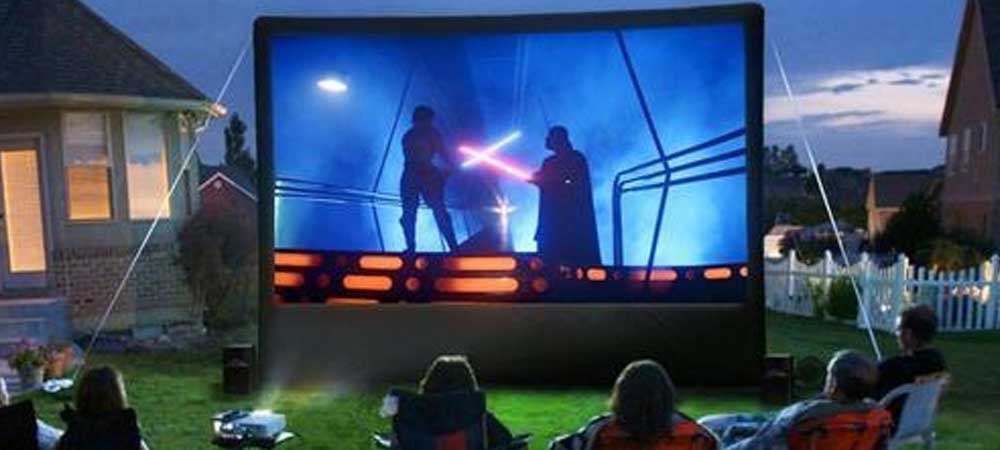
Screen in drive-in movie theatres belongs to this genre. This screen is capable of delivering a theatre-like experience outdoors while sitting in your car. Isn’t it amazing? If you want to enjoy a drive-in theatrical experience in your outdoor or backyard, an inflatable screen is a good choice. Compared to ordinary white sheets, the picture quality offered by these screens is commendable.
As there is no hassle of mount sinking in your lawn, you can easily enjoy this projector screen outdoors. You can easily adjust this screen from various angles without any keystone adjustments and lens shift to your projector. You can fetch an inflatable projector screen stand at a reasonable price to stand on its own. These screens are made from durable elements to withstand extreme temperatures and other outdoor elements.
Fixed Frame Screen
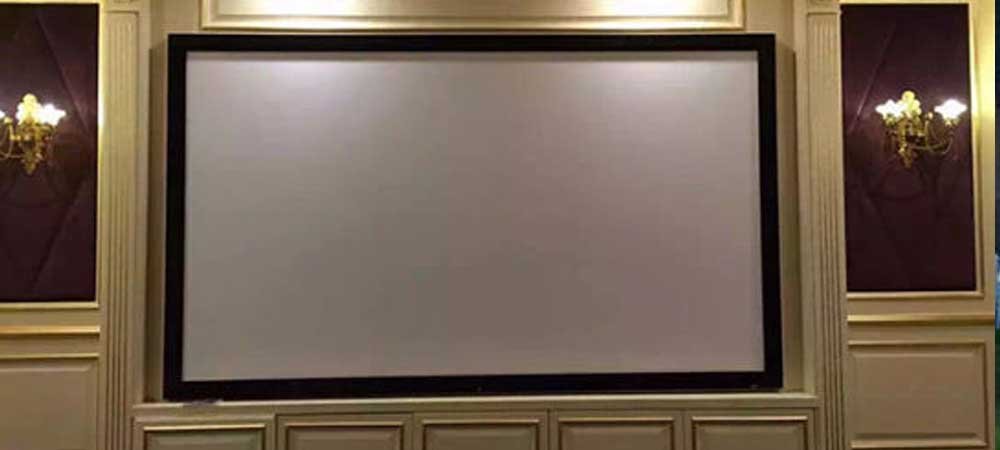
As the name suggests, these are fixed screens which cannot roll up or down. These screens are widely popular for conference rooms and home theatre with ample space. The commercial viability of this screen makes it one of the best choices in the league. As movie theatre accommodates fixed screens, placing this screen at your home theatre gives you the same vibes.
As these screens remain fixed, they are highly durable. Like any whiteboard or blackboard, they are fixed permanently to a wall. There is no worry about bending like in electric projectors. The excellent image quality offered by this screen makes up for the storage and portability issues.
Projector Screen Paint
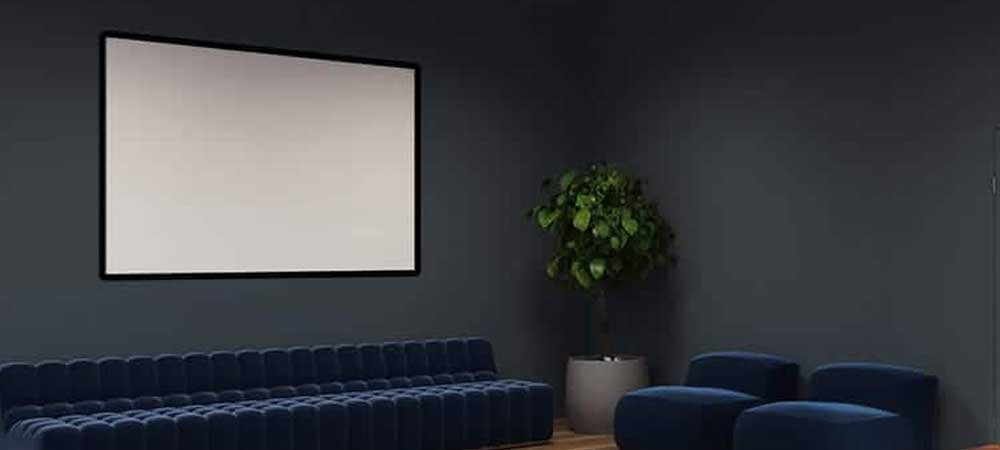
If you are convinced to use your wall as a projector screen, here is the tip. Instead of ordinary pain, use a projector screen paint to get impressive results. The special coating is meant to make the surface reflective to deliver vibrant images. This DIY projector screen saves you a lot of money. All you need is a gallon of paint to prepare a projection screen wall with 92″ to 240″ of diagonal painting.
If you can’t dedicate a wall for the purpose, you can choose a large board to paint to use as a projection screen. Such board will be portable to take along to outdoors as well. The image quality is always excellent when you use a projection screen, but this paint will ensure a better image quality than an ordinary wall.
Rear Projector Screen
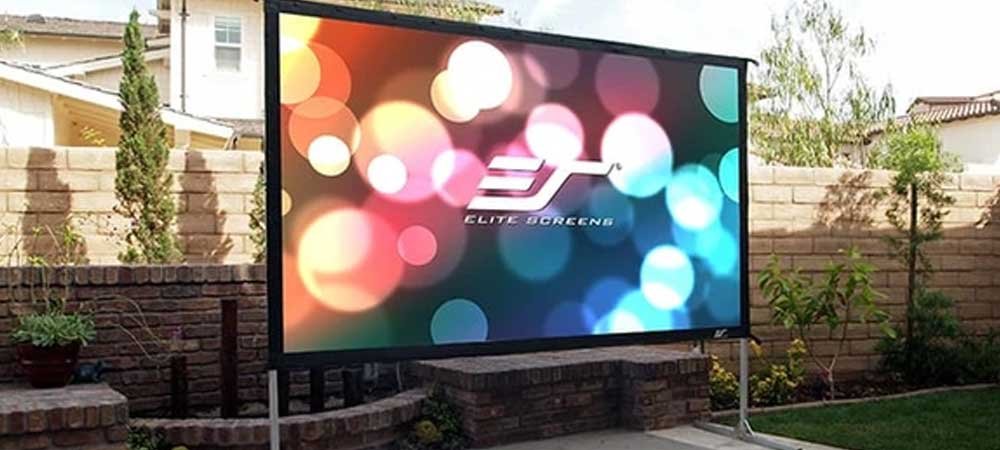
You must consider rear projection as the projector is placed behind this screen if you need excellent brightness, amazing brightness, and outstanding viewing angles. As the screen received direct projection from a nearby projector, it delivers incomparable brightness. It is a see-through projector screen that let you make the audience aisle unobstructive.
This screen can deliver a TV-like feel as it is equipped with light diffusion technology to control the light path to distribute the brightest and sharpest of images on the predefined screen. It facilitates with no keystone adjustments, no lens shifting and no throw ratios. It is a good choice for ambient lighting conditions as well.
Projection Screens by Mount type
Here are some of the projection screens which are classified based on their mount type:
Tripod Projector Screen
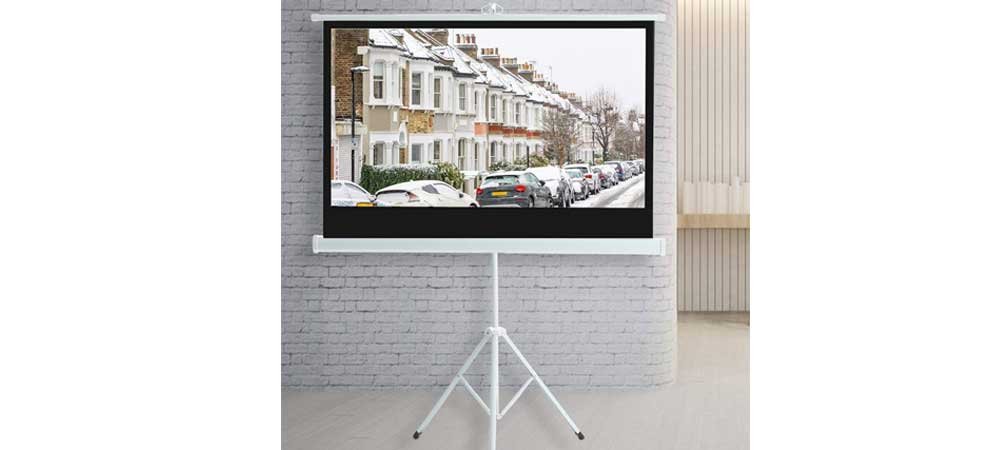
As these projection screens are designed to stand up on tripod legs to support the weight of the screen, these are typically heavier than the floor projectors. These are portable projectors that can be taken along easily for presentations and conferences. But if you choose a bigger screen, it will become a permanent fixture.
You don’t need to use features like keystone correction, lens shift or zoom shift to get the perfect images, as you can easily port these screens.
Folding Frame/ Truss projector Screen
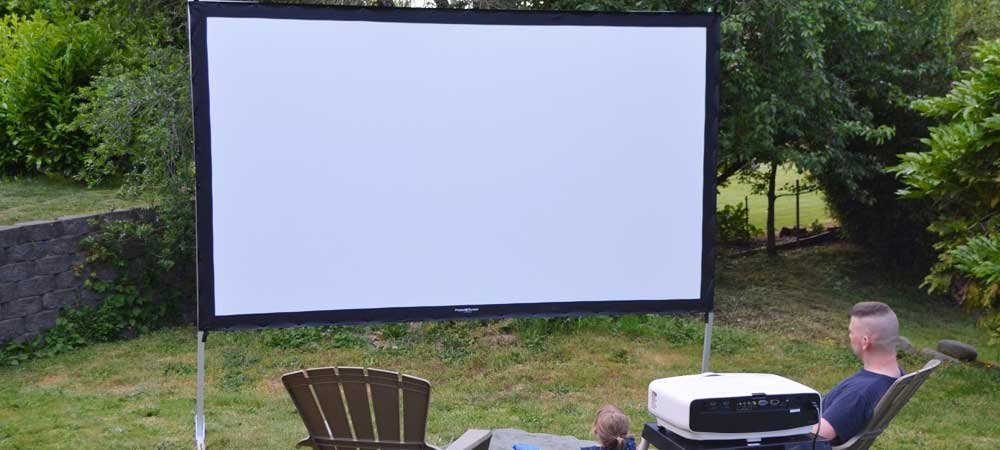
You can foldup these projector screens easily like a folding chair. They are thus known for their better storage, accessibility and better mobility. It can easily support 16:9 video and an older resolution of 4:3 so that you can switching between modern and vintage movies and TV shows.
The impressive dimension of viewable 108” height, 180” diagonal width and 144” width makes it perfect for image viewing at a comfortable throw distance. It is a portable projection screen that pairs well with your portable projector.
Ceiling Projector Screen
As the name indicates, this screen is for mounting on the ceiling. You can choose between electronic or mechanical to pull them down like window blinds. Using amount, you install this screen permanently in your ceiling. If damaged or stops working, you have to replace the entire mount to install a new screen projection.
Most of the ceiling mounts come with an electrical projection screen to provide ultimate convenience to the user. You mount the casing within the ceiling structure.
Wall Projector screens
Wall projectors replace your white wall with projectable screen by mounting a fixed frame screen, In the era of the 4:3 aspect ratio, the squared off-screen have become rectangular now. Looks like an oversized black canvas; you can easily mount your projector screen over the wall like a flat-screen TV.
To accommodate the rear projection, you need a girthier and longer screen wall mount. As we mostly need images on the wall, wall projector screens are worth considering. For wall mounting projectors, fixed frames, front-faced projections and pull-down ceilings are the ideal choices.
Outdoor Projection Screen
These projectors can withstand the extreme temperatures and other outdoor elements. It is also applicable for all the outdoor projection screens. These projectors can stay upright on the dirt and grassy fields, so they do not necessarily require concrete or cemented surface. These projectors are durable and sturdy.
Choose an outdoor projection screen with a black frame to ensure the best visual clarity under ambient lighting. It should be made from a non-corrosive and water-resistant material.
Floor Projector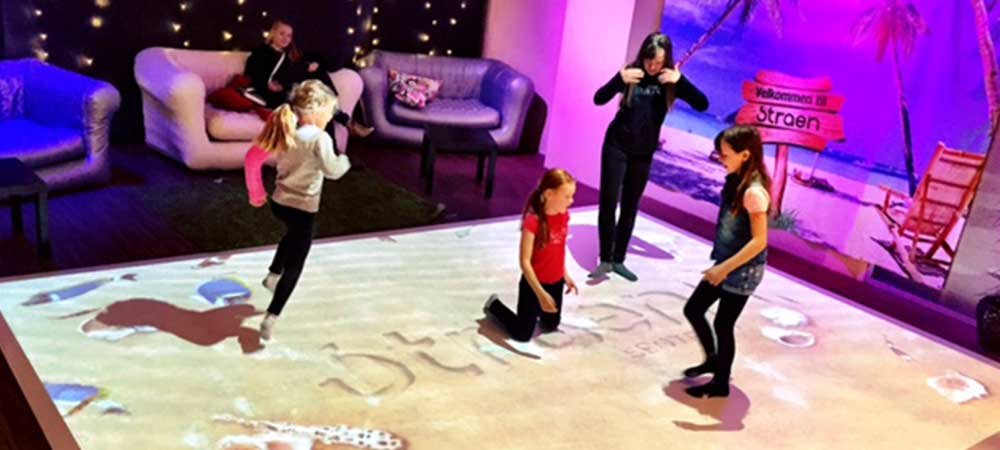
You can mount this projectors on the floor. They come with a mechanism that rises from the floor like a hidden screen. Similar to ceiling projectors, the only difference is in their mounting. If you are looking for a reliable alternative to tripods, floor projectors are worth considering for their lightweight and space-saving features. A bulky tripod is hard to set up due to its heavyweight and large space consumption.
As these projectors are available in a single consolidated piece, you don’t need to assemble them. Generally, you mount a handle at the base of the screen to ensure higher portability. Thus, these projectors does not even require a carrying case. You need to set up the feet and pull up the screen; you are good to go.
Tabletop Projector Screen
Like a painter canvas or picture frame, you can mount this projection screen suitably on your table. It comes with a small projection size but is highly portable to make a good alternative to truss projection screens. You can use it widely use for multiple conferences across various regions, portable presentations or on-the-go movie sessions. The screen is generally larger than the biggest HDTV but not as big as to create a theatrical experience.
It comes in a spring roller version to safely keep it along wherever you go. It conveniently lies on the same tablespace as your keep your other displays, and media players, saving your space.
Wall & Ceiling Projector Screens
If you are looking for a steadier and more balanced mount, you can consider the ceiling and wall in tandem. It helps in elevating your viewing experience by avoiding any accidental bumps and simplifying your viewing issues. You can use these scrrens electronically or mechanically, as per choice.
The screen gets a more stable anchor as the wall assists the mounting with the ceiling or vice-versa. With enhances surface smoothness and tightness, you get a better viewing experience.
DIY mounts

If you are a DIY enthusiast and have a mount building background, creating a DIY mount is not a big deal for you. From complex inflatables to simple whiteboard mounts, you can choose any to suffice your needs and requirements. Commercial mounts are, of course, produce better results, but if you are competitive at mounting, you can make a reliable mount too.
As we got to know the various kinds of projection screens available in the market, next comes the buying guide for Projector Screen.
How to choose the best types of projector screens?
There are several factors that influence the type of projector screens best suited for your projector. One of the major limiting factors could be the size of space to be accommodating your projector screen. Hence, cannot ignore the importance of the right projector screen buy. Let’s consider the various factors which help you in choosing the right projector screen:
Screen Aspect Ratio
Width is to the screen’s height is the aspect ratio, which is crucial for a detailed and impressive image projection. The screens that are much wider than their height – an aspect ratio of 4:3 works well. To synchronize between screen and source to deliver brilliant image display, projectors come with a feature of aspect ratio.
Nature of Use
If you need a projector for multiple conferences or presentations from one place to another, choose a portable projector to ease the task. For a perfect home theatre experience, you can count on the fixed projection screens. These table mount projection screens are ideal for compact presentations. For the outdoor drive-in movies, nothing could be better than an inflatable projection screen.
Frequently Asked Questions
What is the best type of projector screen?
If you often switch between widescreen and full-screen viewing, Video Format Screen is the best option to choose. For data presentations and data presentations, a square screen is best.
Is there a difference in projector screens?
With a uniform reflecting surface, all screens can control how much more they reflect light. However, it does not imply that a 2.0 gain screen will reflect twice the light, which a 1.0 gain screen will do. It simply means that it will be brighter.
Is a black or white projector screen better?
The black screen does not reflect much light as a quiet screen do. Thus, black screen is appropriate for a room with ambient lighting. A black screen is efficient in reproducing the image’s darker portions.
What makes a good projector screen?
The material used in constructing the screen defines the High Grain. If your projector isn’t much bright, i.e. having a low lumen ratio, you should opt for a high gain projection screen. Secondly, High gain screens are the best when you are using them in ambinet light conditions.
Conclusion
With upgraded reflective qualities and better image qualities, projection screens are highly advisable instead of a plain or white wall. If you want to make the most out of your projector, using a projector screen is significant. You lose details and sharp contrast when you choose a wall over a projector screen.

Hi! I am Allan Turner, writer for projectorpick.com. My love for Home theatre inspired me to pen down this blog to share my years of experience in projectors. I am a movie buff and always fascinated with the projectors in cinema halls. This inclined me to explore more about the world of projectors and pen down my observations through this blog.


